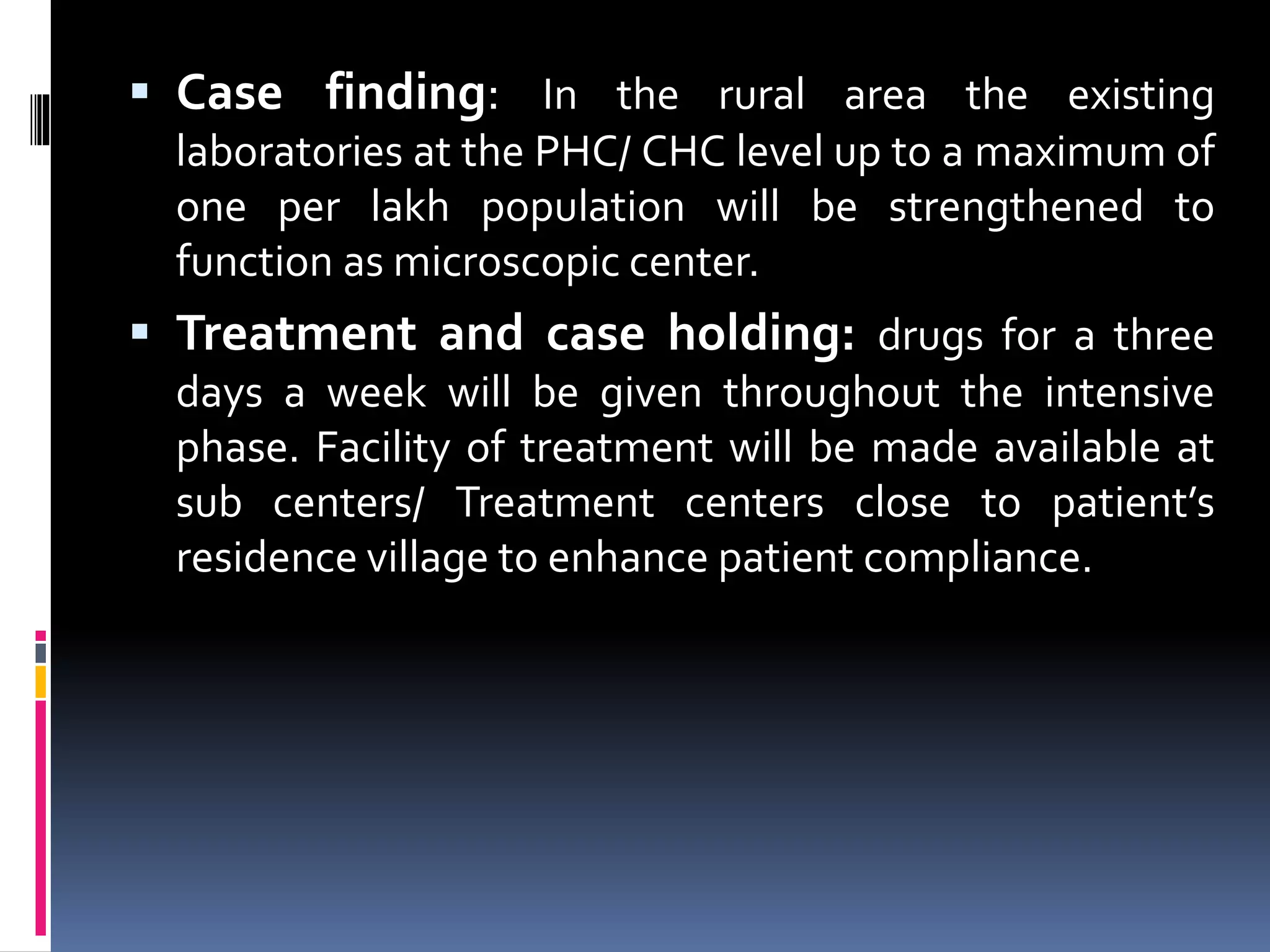The document summarizes India's Revised National Tuberculosis Control Programme (RNTCP). Some key points:
- TB poses a major public health burden in India, with over 2 million estimated cases annually.
- RNTCP was launched in 1997 based on the DOTS strategy to decrease TB mortality and morbidity. Its objectives are to achieve 85% cure rates for new sputum-positive cases and detect 70% of estimated cases.
- RNTCP implements standardized treatment regimens, with drugs administered under direct observation at least during the intensive phase. This along with other measures like improved diagnostics and supervision have helped reduce TB prevalence.
- The program has expanded nationwide in phases since 1997 to achieve universal





































